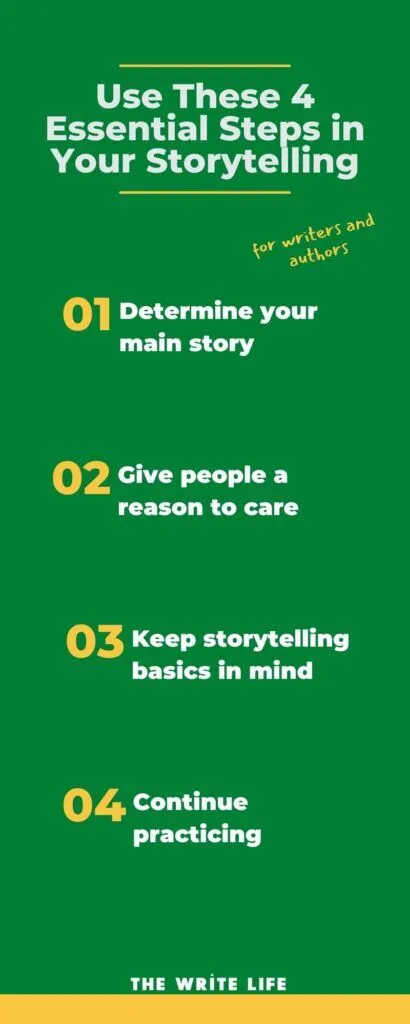Storytelling is an art that transcends genres and transforms even the driest content into a vibrant, engaging experience. Whether you are crafting a blog post, a marketing email, or a technical document, weaving a narrative into your writing can captivate readers and make your message resonate long after they’ve finished reading. In today’s crowded digital landscape, mastering this essential skill can set you apart and help you build stronger connections with your audience.
Understanding the Essence of Storytelling
At its core, storytelling is about more than just narration—it’s the deliberate use of a beginning, middle, and end to transport readers into a world where emotions and ideas blend seamlessly. Every culture cherishes stories, not only as a form of entertainment but also as vehicles for education, cultural preservation, and the transmission of moral values. From the shared lore at family gatherings to the gripping narratives on the big screen, stories offer a unique route to evoke empathy and spark the imagination.
While many associate storytelling with fiction, its techniques can be effortlessly infused into any type of writing. Engaging your reader’s senses by vividly describing how things look, feel, sound, taste, or even smell can make your content come alive—even when presenting complex or technical information.

Why Storytelling Matters for Every Writer
There is a simple truth behind why storytelling is so powerful: humans are wired to remember and connect with stories far more than with isolated facts or statistics. Data might inform, but stories inspire. When information is conveyed through a narrative framework, it’s not only more memorable—it also feels personal. For instance, try remembering a dull report of numbers versus an insightful case study that tells the journey of a small business overcoming challenges. The latter stays with you because it weaves emotion and context, making the message impactful.
For bloggers especially, storytelling is an underused tool that can distinguish your voice in a sea of similar content. By integrating narrative elements into your posts, you invite readers to empathize with your perspective, understand your points on a deeper level, and share your content with others, thus broadening your reach.
Four Essential Steps to Implement Storytelling in Your Writing
To harness the transformative power of storytelling, start by focusing on a few key strategies that can be applied to any form of writing:
- Outline Your Core Narrative:
Every effective story follows a basic structure—there is a clear beginning, a progression of events, and a defined conclusion. Begin by determining the primary narrative you want to share. What is the central conflict or idea that will drive your piece? Establishing this framework early on will provide clarity about what details to include and in what order, ensuring that your writing flows logically and keeps readers engaged. - Give Your Audience a Reason to Connect:
It’s not enough to simply tell a story; you must also make sure it matters. Consider who will be reading your work and why they should care. This involves thinking carefully about your audience’s interests, challenges, and desires. Frame your narrative around relatable scenarios or emotions that resonate with your readers. Whether you’re recounting a personal experience or illustrating a broader concept, infuse the text with genuine emotion and authenticity. By focusing on elements that evoke empathy or inspire action, you create a bond that transforms your writing from mere words to lived experience. - Embrace Sensory Detail and Genuine Language:
To truly draw readers into your narrative, paint a picture with your words. Avoid bland, overused phrases and the sterile language of corporate jargon. Instead, let your readers smell the aroma of freshly brewed coffee, feel the crispness of autumn air, or hear the gentle murmur of a nearby brook. Imagine telling your story as if you were sharing a cherished memory with a friend—a narrative that flows naturally, rich with sensory details and honest expressions. This approach not only enhances engagement but also enriches the texture of your content, making it distinctly yours. - Practice, Revise, and Refine:
Like any craft, storytelling improves with practice. Not every story will be a masterpiece on the first try, and that’s perfectly normal. Make a habit of writing regularly, experimenting with different narrative styles and techniques. Over time, review your work to see what resonates with your readers and what falls flat. Embrace feedback as a valuable tool for growth and be willing to revise your writing until it clearly and compellingly conveys your intended message. Remember, effective storytelling is a journey of continuous learning and self-improvement.

Embracing Storytelling as a Way of Life
Incorporating storytelling into your writing isn’t about masking information with fluff—it’s about deepening the connection between the content and its audience. When you think of every piece you write as an opportunity to tell a story, you change the way you approach your craft. You become more mindful of structure, emotion, and detail, and ultimately, your writing grows richer and more persuasive.
Whether you are a seasoned professional or just beginning your journey as a writer, these storytelling techniques can amplify your message and elevate your entire body of work. Stories have the power to entertain, inform, and inspire, and by integrating them thoughtfully into your writing, you invite readers to not just read your words, but to experience them.
In today’s highly competitive writing landscape, the ability to tell a compelling story is an invaluable skill—one that will not only capture attention but also create lasting impressions. So, dive into your next project with a storyteller’s heart, and watch as your writing transforms into a dynamic conversation between you and your readers.

